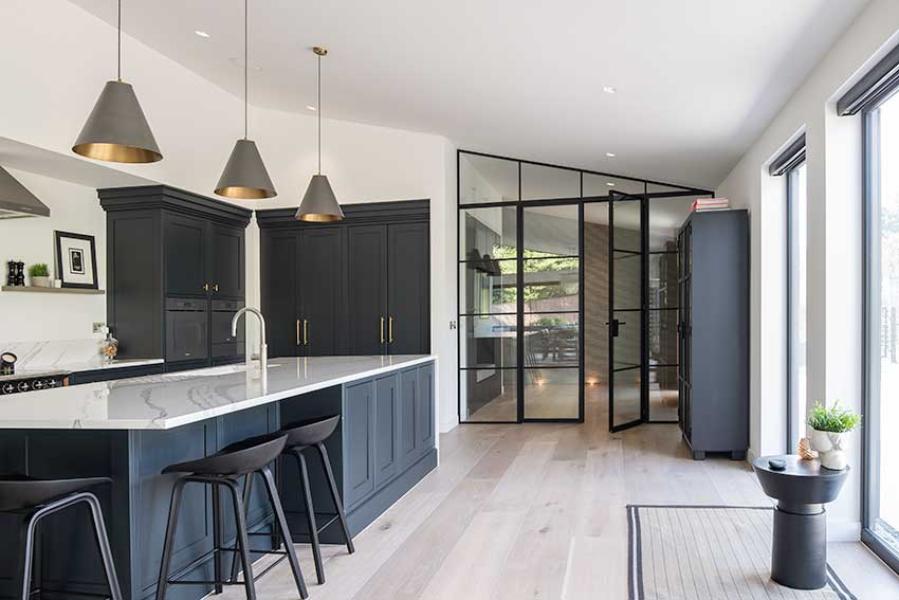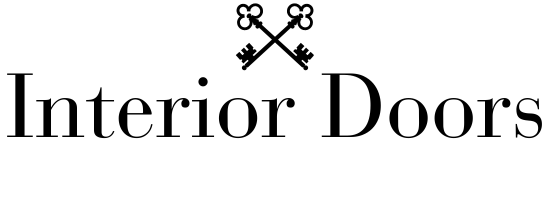
How to Budget for Interior Doors in a Renovation
Samuel MorrisHow to Budget for Interior Doors in a Renovation | Guide
When it comes to home renovations, we often focus on the big-ticket items — kitchens, bathrooms, flooring — while quietly overlooking a crucial element: the doors. Yet, interior doors play a massive role in shaping the flow, feel, and functionality of your home. Choosing and budgeting for them carefully can make all the difference between a renovation that feels finished and one that seems incomplete. View our Showroom for ideas

In this guide, we’ll break down how to budget for interior doors during a renovation, from understanding the true costs involved to making smart choices that keep your project on track without compromising on style or quality.
Why Interior Doors Matter More Than You Think
Interior doors are far more than simple barriers between rooms. They define spaces, help control noise, provide privacy, and serve as major style statements. When doors don’t match the design or quality of a renovation, they can stick out — and not in a good way. View the Black Sutton Here

Replacing old, tired doors with new, stylish options can:
- Instantly modernize a space
- Improve insulation and noise control
- Enhance your home's resale value
- Complete the "finished" look you’re after
But how do you plan and budget for something that’s so often treated as an afterthought? That’s what we’ll dive into next.
Step 1: Assess How Many Doors You Need
The first step is surprisingly simple — count your doors. This includes:
- Bedroom doors
- Bathroom doors
- Closet doors
- Pantry doors
- Utility room doors
- Any double doors or pair doors
- Specialty doors like sliding or pocket doors

If you’re remodeling multiple rooms, it’s often wise to replace all the doors at once for consistency. It might seem like an extra cost now, but it can save you from mismatched styles and future upgrade headaches.
Pro Tip: Don’t forget about less obvious doors — like those leading to basements, garages, or laundries — which may need to match your interior design.
Step 2: Understand the Types of Interior Doors
Not all doors are created equal. Different types of doors come with different price tags — and knowing which types you’ll need will affect your budget significantly.

Here are some common types:
Hollow Core Doors
- Cost: Low
- Features: Lightweight, affordable, good for low-traffic areas
- Drawbacks: Less soundproof, less durable
Solid Core Doors
- Cost: Mid-range
- Features: Heavier, better sound insulation, improved durability
- Drawbacks: More expensive than hollow core
Solid Wood Doors
- Cost: High
- Features: Luxurious, classic appeal, top durability and soundproofing
- Drawbacks: Pricey and sometimes heavier to install
Glazed Doors
- Cost: Variable
- Features: Include glass panels for light-sharing, beautiful for shared spaces
- Drawbacks: Can be fragile, may cost more depending on glass type
Fire Doors
- Cost: Higher
- Features: Fire-rated for safety, usually required between kitchens and garages or in flats
- Drawbacks: Heavier, must be installed properly to be effective
Choosing the right door type for each space helps balance your budget without sacrificing quality where it matters most. View the Vancouver FD30

Step 3: Set a Realistic Price Range
Once you know your types and quantities, it's time to set a realistic budget range. Here’s a rough guide for 2025 UK pricing:
- Hollow Core Doors: £50 – £100
- Solid Core Doors: £100 – £250
- Solid Wood Doors: £250 – £600+
- Glazed Internal Doors: £150 – £500+
- Fire-Rated Doors: £200 – £500+
Remember: that’s just for the doors themselves — hardware, frames, and fitting will add to your total cost.

Budgeting Tip: Plan for a 20–30% buffer on top of your initial door budget to account for hardware (handles, locks, hinges) and fitting.
Step 4: Factor in Door Frames and Linings
If your renovation is a full "back to brick" job, you’ll likely need new door frames and linings too. Old frames might not suit the new doors or could be warped or damaged.

Frame and lining costs typically add £50–£150 per door depending on material and style.
It’s important to match your door and frame style — modern doors with old-style frames can create a disjointed look.
Step 5: Choose Your Hardware Carefully
Hardware is where small costs can quietly stack up. For each door, you’ll likely need:
- Hinges (usually 3 per door, especially for fire doors)
- Handles or knobs
- Latches or locks (bathrooms and bedrooms often need locking handles)

Average costs:
- Handles: £15–£150 per set
- Hinges: £5–£15 per hinge
- Locks/latches: £10–£50 each
High-end or designer hardware can easily multiply those figures — so it’s crucial to balance your choices to avoid blowing your budget.
Step 6: Plan for Installation Costs
Installing interior doors is not as simple as hanging a picture. Good fitting makes the difference between a door that swings smoothly and one that sticks or drags.

Installation costs:
- Standard internal door fitting: £50–£150 per door
- Fire door fitting: £100–£250 per door (specialist fitting required)
Factors like uneven floors, unusual door sizes, and old walls needing repair can add extra fitting costs.
Tip: Always ask your installer if fitting the frame and architrave is included — not all quotes are "full install" prices!
Step 7: Prioritize Where to Spend and Where to Save
Budgeting isn’t just about limiting your spending — it’s about spending smart.
- Spend more on doors for main living areas: hallways, lounges, kitchens.
- Save on less visible doors: closets, utility rooms, attics.
Also, if your home layout is open-plan, prioritize quality and style for doors that are always on display.

Examples:
- Solid core or glazed doors for lounge/kitchen entrances.
- Basic hollow core for closet and spare bedroom doors.
Step 8: Consider Bespoke or Standard Sizing
If you need non-standard door sizes, you may face higher costs for:
- Custom-manufactured doors
- Trimming oversized doors (sometimes not possible if doors are hollow)
- Bespoke frames and linings

Sticking to standard UK door sizes where possible (e.g., 762mm x 1981mm) can save you significant money.
Step 9: Explore Package Deals and Bulk Discounts
Many door suppliers offer multi-buy discounts — for example, buying 5+ doors together might save you 10–20%. Package deals that include doors, frames, and hardware are another good way to save.

Always ask suppliers if:
- There’s a discount for larger orders
- They offer “supply and fit” packages
- They have seasonal promotions (winter sales can be excellent for doors)
Step 10: Don’t Forget Painting and Finishing Costs
If you buy primed doors (white primed, oak primed, etc.), they still need final painting or staining.
Typical finishing costs:
- DIY paint: £10–£20 per door (materials only)
- Professional painting: £50–£100 per door

Solid timber doors usually need sealing even if you like the natural look — it protects against humidity and wear.
Top Tip: If you're aiming for a slick renovation schedule, consider pre-finished doors. They cost more upfront but save labour and drying time.
Sample Budget for a Medium-Sized Home (10 Doors)
| Item | Cost Per Door | Total (Approx) |
|---|---|---|
| Solid core primed doors | £150 | £1500 |
| Frames and linings | £75 | £750 |
| Handles, hinges, locks | £60 | £600 |
| Installation (standard) | £100 | £1000 |
| Finishing (DIY paint) | £15 | £150 |
| Estimated Total | - | £4000 |
Adding a buffer of 20% would give a final estimate of around £4800 — a realistic figure for a quality finish across your home.
Conclusion: A Good Door Budget Makes a Great Renovation
Budgeting for interior doors isn't just ticking a box — it's a smart investment in the look, feel, and function of your entire renovation. By planning properly, choosing wisely, and allowing for the full scope of costs (not just the doors themselves), you’ll avoid nasty surprises and create a home that feels cohesive and complete.

At the end of the day, doors aren't just practical — they're an essential piece of your home’s personality. And with careful budgeting, you can make them a standout feature of your renovation, not an afterthought.
